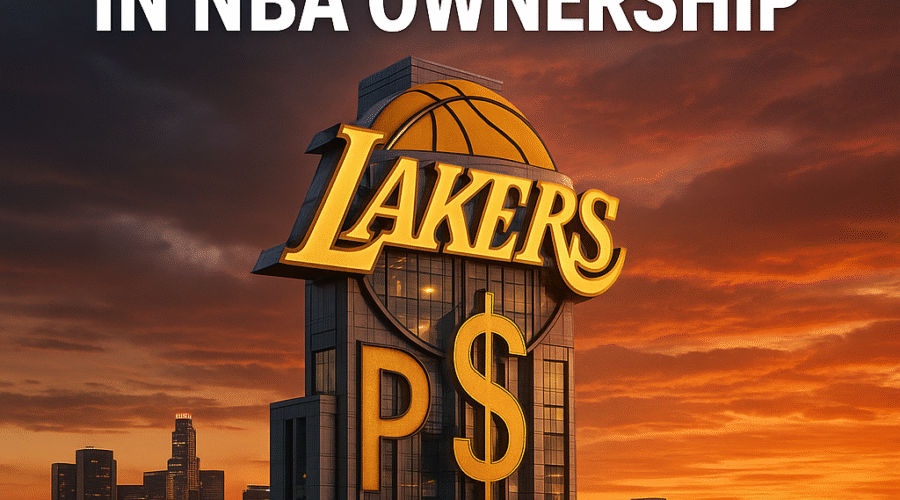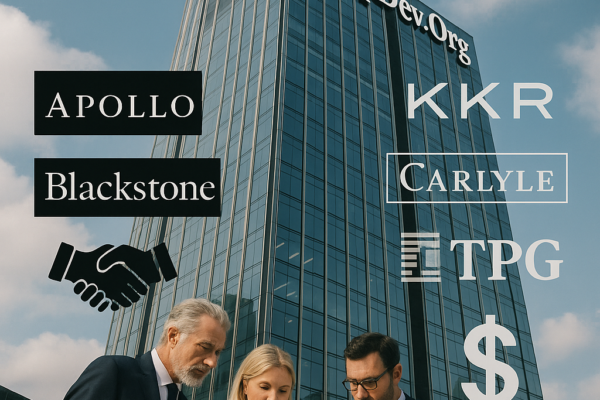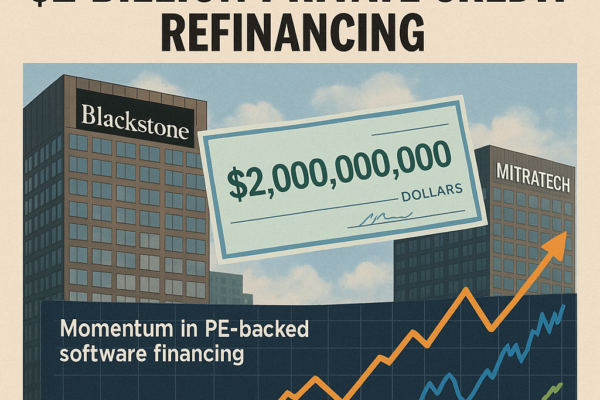The $10 billion acquisition of the Los Angeles Lakers by Guggenheim Partners CEO Mark Walter represents the largest transaction in professional sports history and signals a structural transformation in NBA ownership models[1][2][15][18]. This deal, which transfers majority control from the Buss family after 46 years while retaining Jeanie Buss as governor, exemplifies how private capital is reshaping professional sports economics through institutional investment vehicles[11][12][18]. The transaction occurs against a backdrop of relaxed NBA ownership rules permitting private equity funds to hold up to 20% stakes across multiple franchises, catalyzing unprecedented franchise valuations and new liquidity pathways for legacy owners[4][10][16]. As sovereign wealth funds and pension vehicles follow private equity into sports assets, the Lakers sale establishes a benchmark that will accelerate capital flows into premium franchises while raising critical questions about competitive balance and long-term governance[14][17].
💼 Seasoned CorpDev / M&A / PE expertise
Deal Architecture and Transaction Mechanics
Valuation Benchmark and Ownership Transition
The $10 billion enterprise valuation shatters previous records, nearly doubling the Boston Celtics’ recent $6.1 billion transaction and exceeding the Washington Commanders’ NFL sale by over $3.9 billion[8][15][18]. This premium reflects the Lakers’ unique combination of global brand equity, media market dominance, and championship legacy—factors that generated 11 titles under Buss family stewardship since Jerry Buss’ $67.5 million acquisition in 1979[12][15]. Structurally, Walter acquires majority control through his holding company TWG Global while the Buss family retains approximately 15% equity, satisfying the NBA’s requirement that governors maintain minimum 15% stakes[11][12][18]. Crucially, the transaction includes continuity provisions ensuring Jeanie Buss remains governing operator for “at least a number of years,” preserving institutional knowledge while transitioning financial control[2][18].
Capital Stack and Pre-Existing Positions
Walter’s path to majority ownership originated in 2021 when his consortium acquired Philip Anschutz’s 27% minority stake at a $5 billion franchise valuation, securing right of first refusal on the controlling interest[1][11][12]. This staged acquisition strategy allowed incremental capital deployment while establishing governance familiarity with NBA protocols. The current transaction reportedly involves Guggenheim’s discretionary capital rather than dedicated sports funds, contrasting with institutional approaches like Sixth Street’s Celtics investment[8][17]. Financial engineering appears minimal given all-cash terms, avoiding leveraged buyout structures that might trigger NBA debt restrictions[16].
Buyer Profile: Mark Walter’s Sports Conglomerate
Portfolio Construction Strategy
Walter operates through a multi-tiered ownership architecture: TWG Global serves as primary holding company with Guggenheim Partners ($345 billion AUM) providing capital formation capabilities[1][18]. His sports properties demonstrate deliberate vertical integration across leagues and geographies, including:
| Asset | League | Role | Acquisition |
|---|---|---|---|
| Los Angeles Dodgers | MLB | Controlling Owner | 2012 |
| Chelsea FC | Premier League | Consortium Member | 2022 |
| Los Angeles Sparks | WNBA | Primary Owner | 2014 |
| Cadillac Racing | Formula 1 | Controlling Interest | 2023 |
This ecosystem creates cross-promotional opportunities and shared services infrastructure, exemplified by the Dodgers’ $100 million player development complex now accessible to Lakers operations[18]. Walter’s approach emphasizes operational autonomy for proven executives—a philosophy extending to Jeanie Buss’ retention and Magic Johnson’s endorsement of the transaction[18].
Financial Engineering Capabilities
Guggenheim’s asset management platform provides distinctive advantages in sports transactions, including:
1) Balance Sheet Strength: Walter’s $6.1 billion personal net worth enables equity-heavy structures avoiding restrictive leverage[1]
2) Cross-Platform Synergies: Content partnerships between Dodgers’ SportsNet LA and Lakers’ Spectrum SportsNet create bundled media rights opportunities
3) Real Estate Integration: TWG’s development capabilities could unlock value around Crypto.com Arena, mirroring Dodgers’ $3 billion surrounding development[12]
NBA Ownership Evolution: Rule Changes Enabling Institutional Capital
Regulatory Milestones
The league systematically dismantled traditional ownership barriers through phased reforms:
| Year | Policy Change | Capital Impact |
|---|---|---|
| 2019 | Initial PE framework proposed | Dyal HomeCourt becomes first approved fund |
| 2021 | Formal adoption: 20% single-team cap, 30% aggregate institutional ownership | Blue Owl, Arctos enter market |
| 2022 | Sovereign wealth/pension fund access | OMERS acquires Raptors stake |
These changes responded to franchise valuation inflation that priced out individual buyers—average team values grew 500% over the decade preceding 2025[14][16]. Commissioner Adam Silver explicitly endorsed institutional capital as necessary for “ownership diversification and liquidity creation” amid rising operational costs[10][16].
Current Institutional Footprint
Private equity’s NBA penetration includes:
– Blue Owl Capital: Through Dyal HomeCourt, holds positions in Hawks (6%), Hornets, Kings, and Suns (exited 2023)[6][9]
– Arctos Sports Partners: 5% Warriors stake at $5.5 billion valuation[13]
– Sixth Street: 20% Spurs ownership and Celtics consortium position[8]
The league’s 30% institutional cap per team creates competitive allocation dynamics, with premium franchises like Lakers and Warriors nearing saturation while smaller markets retain capacity[4][16].
League-Wide Implications and Competitive Impacts
Valuation Recalibration
The Lakers’ $10 billion benchmark creates immediate peer effects across the league:
| Franchise | 2025 Valuation | Premium to Pre-Lakers Deal |
|---|---|---|
| Warriors | $8.8B | +59% |
| Knicks | $7.5B | +36% |
| Celtics | $6.1B | +10% |
| Bulls | $4.8B | +26% |
This appreciation benefits all owners through balance sheet strength but exacerbates revenue disparity between top and small-market teams. Luxury tax payments already exceeded $700 million league-wide in 2024, a figure likely to increase as new owners like Walter leverage financial resources[17][18].
Competitive Balance Concerns
Private equity’s entry creates divergent incentives between financial sponsors seeking IRR through franchise appreciation and basketball operations prioritizing championships. While Walter’s Dodgers demonstrated willingness to absorb $300 million payrolls, pure financial sponsors typically target 20% returns within fund lifecycles—potentially conflicting with championship cycles[15][17]. The NBA’s stringent institutional ownership caps (maximum five teams per fund) prevent consolidation but create portfolio management challenges when teams compete in playoffs[6][16].
Governance Models and Control Dynamics
Hybrid Management Structures
The Lakers deal establishes a template for balancing institutional capital with operational continuity:
– Governance Preservation: Jeanie Buss retains basketball decision-making authority despite reduced equity, ensuring cultural continuity[2][18]
– Board Representation: Walter secures governance rights through board seats while delegating basketball operations, mirroring his Dodgers approach with Andrew Friedman[18]
– Reporting Protocols: Financial sponsors typically require enhanced reporting on revenue drivers like media rights and arena operations without interfering in roster decisions[17]
League Oversight Mechanisms
The NBA maintains control through:
1) Investor Certification: Funds require league approval demonstrating $750M+ AUM and 10-year minimum horizons[10][16]
2) Passivity Covenants: Institutional investors forfeit voting rights on core basketball matters[4][16]
3) Transfer Restrictions: PE stakes face first refusal rights and league approval requirements upon exit[6]
Future Trajectory and Strategic Implications
Capital Markets Evolution
The transaction accelerates three structural shifts:
– Securitization: Expect franchise-level debt issuance collateralized by media rights, following NFL’s Stadia Capital models
– Secondary Markets: Blue Owl’s partial Suns exit after 18 months demonstrates emerging liquidity pathways[6][9]
– International Capital: Sovereign wealth funds like Qatar Investment Authority now eligible under 2022 rules[14]
Competitive Landscape Projections
By 2030, we project:
– 100% of teams will have institutional ownership versus 40% today
– Average franchise values will reach $8.2 billion, driven by media rights inflation
– Luxury tax pools will exceed $1.5 billion annually as financial sponsors absorb losses for appreciation
Risk Factors
Emerging challenges include:
– Revenue Concentration: Top 5 franchises now generate 38% of league revenue versus 28% in 2015
– Geopolitical Scrutiny: Sovereign wealth investments risk human rights controversies, as seen with Newcastle United[14]
– Return Expectations:
https://www.businessinsider.com/who-is-mark-walter-buying-la-lakers-2025-6, https://frontofficesports.com/lakers-buss-walter-sale-record/, https://www.theringer.com/2025/06/19/nba/los-angeles-lakers-sale-mark-walter-10-billion, https://frontofficesports.com/newsletter/private-equity-is-here-to-stay-in-the-nba/, https://artica.capital/en/publicacoes-clair/times-de-nba-e-fundos-de-private-equity/, https://redbirdcap.com/wp-content/uploads/2024/04/Business-Insider_PE-in-Sports_4.23.24.pdf, https://basketball.realgm.com/staff/Michael-Blackstone/Summary/696, https://www.ai-cio.com/news/boston-celtics-sold-to-consortium-of-investors-including-sixth-street/, https://www.sportsbusinessjournal.com/Articles/2024/05/27/power-players-dyal-homecourt-partners/, https://www.axios.com/2021/01/28/nba-private-equity-funding-dyal, https://hypebeast.com/2025/6/buss-family-sells-los-angeles-lakers-majority-stake-mark-walter-10-billion-usd, https://www.latimes.com/sports/lakers/story/2025-06-18/lakers-sell-majority-ownership-to-mark-walter, https://hoopshype.com/rumor/warriors-ownership-sells-five-percent-stake-of-team-franchise-valued-at-5-5-billion/, https://www.investopedia.com/nba-courts-sovereign-wealth-pension-funds-6835166, https://www.si.com/nba/lakers-sale-price-breaks-record-sports-franchise, https://www.linklaters.com/en-us/insights/blogs/sportinglinks/2021/february/backcourt-assist-the-nba-opens-the-door-to-institutional-investors-as-minority-owners, https://bspeclub.com/private-equity-consortium-acquires-the-boston-celtics/, https://www.sportsnet.ca/nba/article/report-buss-family-agrees-to-sell-lakers-to-dodgers-owner-mark-walter/





